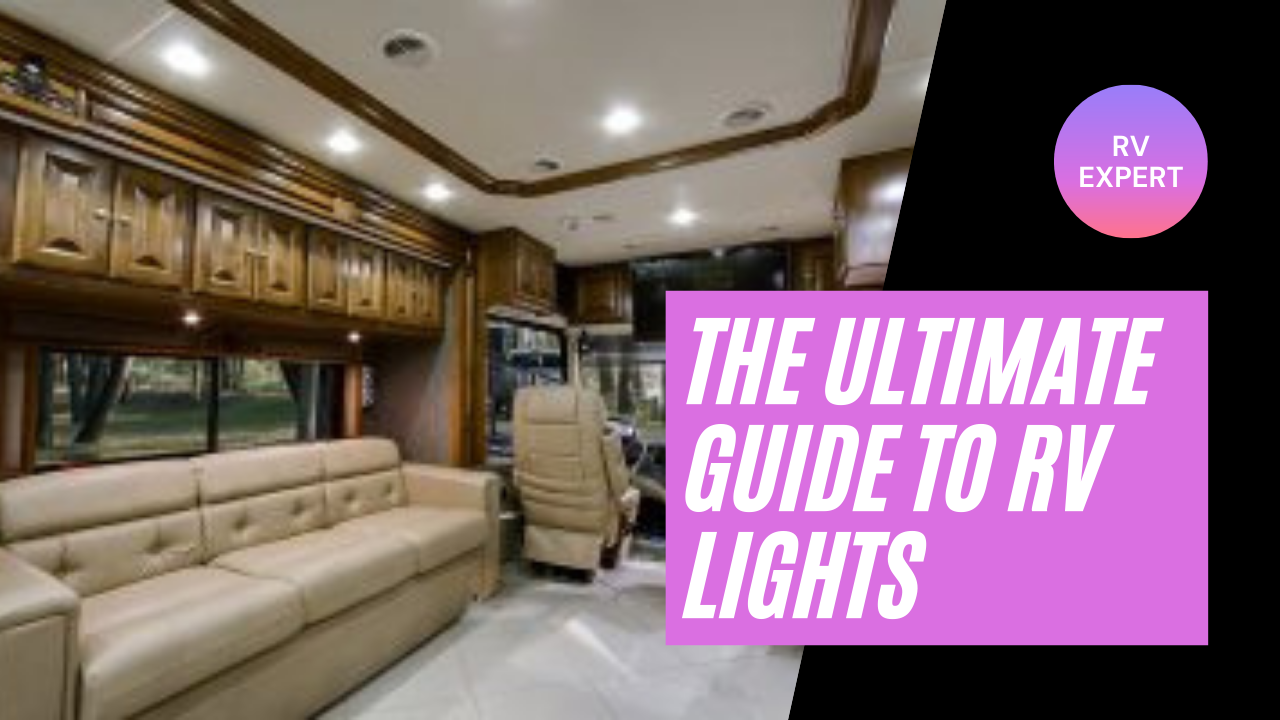Vehicle lights are an essential part of your vehicle; if you may, they can signal to other drivers that you’re there or warn them about what you’ll be doing. Police also use them for the same reasons. When it comes to RV lights, though, things get a little more complicated once their size is considered. This article will give The Ultimate Guide To RV Lights available so you can always choose the right ones depending on your circumstances.
Table of Contents
RV light types: What do I need?
When choosing between RV light fixtures, the first thing to consider is where they will be installed since this will determine what options are available to you. For example, if they’re being mounted on top of your vehicle’s roof, you’ll have a slightly different range of options compared to those being mounted inside.
Lighting for the roof of your RV or trailer
In this case, the best option is an LED light that’s also weatherproof since it will be exposed to all kinds of elements. For example, some brands specialize in producing waterproof lights, such as K-Source. This doesn’t mean that other types may not work on top of your vehicle’s roof, but since you don’t want them going out while you’re driving down a bumpy road or while it starts raining, consider buying a specific type made for this purpose.
Again, it would be a better investment than spending money each time on replacing defective ones. These lights are usually quite bright and white, although some brighter bulbs may be more yellowish or different colors like pink or purple.
Lights on the inside of your RV
The reason for this is simple; LED lights can sometimes be too bright for interiors and look weird when lit up. If you go with the color temperature idea mentioned above, remember that white light will highlight every little detail inside your vehicle while light-colored ones will just blend in better.
Also, try to avoid using one type of bulb all through your vehicle’s cabin unless it’s actually built for that purpose since excess brightness may cause eye strain if you’re driving for long periods. The best option would be to use standard household bulbs in areas you occasionally need, such as cupboards or bathrooms. Investing in LED strips is the best option for other areas since they’re easy to install and quite versatile.
Types of RV lighting fixtures
When it comes to interior lights for your vehicle, there are three types you can choose from depending on what kind of installation you want. They are:
1. Standard sockets
These have been around for a long time and consist of a bulb screwed into a socket that’s then mounted or even glued onto a surface. It’s very resistant but also difficult to replace since the entire fixture needs to be taken down for this purpose. On top of this, too much pressure on these lamps may cause them to break, so they need special care when being handled.
2. Switches
Most commonly found inside cupboards, these are designed to be pressed on or off by sliding them up or down. Some are attached directly to the light bulb, but others, like LED strips, may simply need to be plugged in and unplugged when needed.
3. Adhesive tape
This is very easy to install since it only requires the use of double-sided adhesive tapes that can easily attach even while you’re driving down a bumpy road. Also good for temporary installations, they’re also resistant enough to last long periods of time without coming out no matter how much your vehicle shakes.
Choosing RV lighting products: What do I need?
When choosing between LED lights and other types such as halogen ones, it’s important to consider their purpose. You want to be able to see inside your vehicle’s cabin but not blind yourself every time you look at something, so it’s a choice between looking cool and getting decent lighting for whatever you need it for.
Key considerations when buying LED lighting fixtures
1. What is the purpose of your lights?
Do you just want them as an accessory, or would you actually like some practical use out of them? Remember that they’re very bright, so this might cause eye strain after too much exposure if they don’t have any other function except making your vehicle look cooler than it already does with regular halogen ones.
If you only intend on using your light fixtures for novelty purposes, buying cheap ones may do the trick, but if there needs to be an actual practical use for it, you might want to consider investing in better-quality ones.
2. What type of installation do you need?
Bulbs can be hardwired or plugged into your vehicle’s power supply or even attached with double-sided adhesive tapes. It’s important to consider this, especially if you intend on using them as permanent fixtures, since they won’t be cheap to replace after they get ripped off from the surface they were attached on. This is a necessary tradeoff for cheaper models, but some may come with additional accessories such as screws or wire nuts that make the process easier and more secure.
3. How bright do I need my lights?
If all you’re looking for are cool accent lighting, it doesn’t matter how bright they are or if they come with an actual purpose. However, if you want them to be used for reading purposes, you’ll need brighter ones that won’t strain your eyes after being exposed to them for too long.
4. What color temperature do I want?
LED lights can have a variety of light temperatures, which can affect their color rendering capabilities. If this is important to you, it would be necessary to look up what kind of lighting effect each specific model has, so it’s best not to base your choice on aesthetics alone since this may have bigger implications than just making things look pretty.
How much should I expect to pay?
A decent set of LED lights will run about $30-$50, but some models can go as high as $500 depending on what you want to use them for. For novelty purposes, the cheaper ones will do, but if there’s any need for practicality, then you might as well invest in better quality options such as those with replaceable light bulbs and sturdy mounting brackets.
Conclusion
Thank you for reading this article about the ultimate guide to RV lights! Hopefully, it has helped you understand how LED lighting works, its types, and how much it costs. You now have a few things to think about when choosing a great set of lights for your vehicle, so you’ll be able to choose one that suits your lifestyle and budget best.
Remember not to rush during your purchase decision, especially if you’re buying them as a permanent fixture. Get more information about LED lighting, halogen lights, and other RV light fixtures. If you enjoyed this article, please remember to share!
[kkstarratings]








